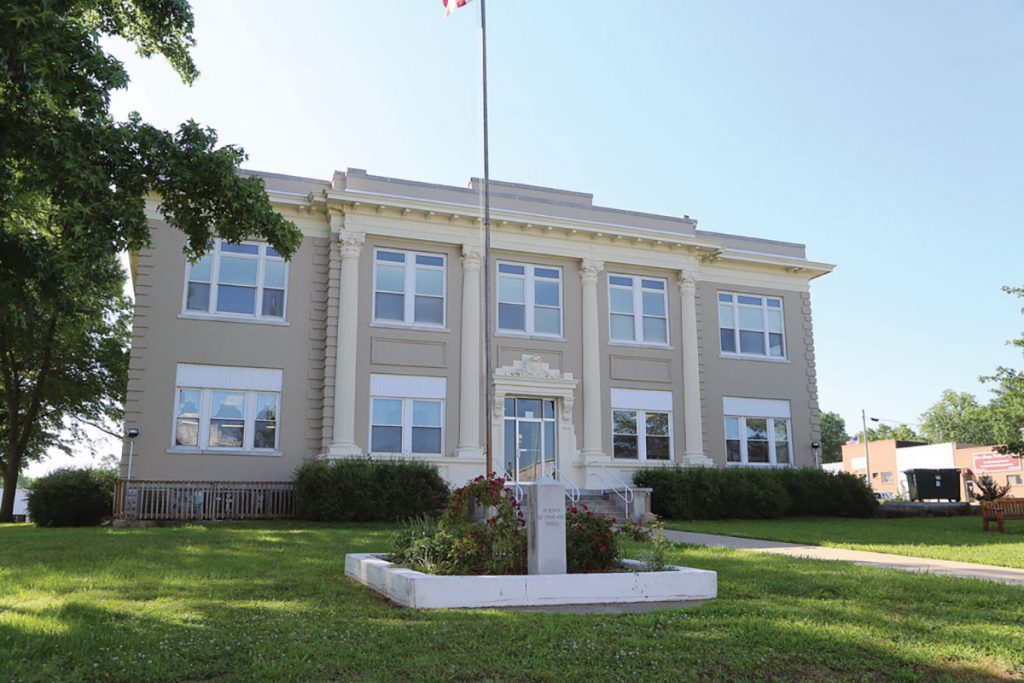
An unsuccessful railroad venture halted construction on the St. Clair, Mo., County Courthouse for a time
Many years of civic and social experiences surround courthouse squares and have transformed them into special places in small town Missouri.
This continues to be the case in Osceola, but it survived an awkward history during its construction.
St. Clair County, Mo., was organized in January 1841, but the first courts met in homes until 1842 when a courthouse was built. This courthouse was at least partially destroyed by Gen. James Lane in September 1861. It was repaired, but burned in November 1864 in Civil War conflicts.
An appropriation of $15,000 was approved by voters in June 1866 for a new courthouse. The architects for this courthouse was A.G. Clarke and Thomas Sutherland, with contractors Hicks and Bacon. The 44-foot-square structure was built on the foundation of the previous courthouse.
The two-story building had covered porches with stairways leading to the second floor. Four, two-story brick pillars supported the roofs covering the porches. A 16-foot cupola was added to serve as a bell tower. Cut stone was used for the caps and sills of the doors and windows.
The building was dedicated with flowery speeches given by prominent people of the area. Progress, wealth and growth were mentioned as county ideals and goals. However, separate celebration balls and dinners were held for African-Americans, remembering the remaining conflicts of the Civil War.
The building was insured for $3,000 in 1880. A decade later, complaints were given for the safety of the structure. In spite of the courthouse condition, it continued to be used for 18 more years until the circuit judge refused to hold court in it.
Despite the condition, the building was not razed and a small addition was made on the east, permitting some county offices to continue using the courthouse.
The County Court finally selected Clifton B. Sloan of Kansas City as architect in 1916. D.M. Wall submitted a bid on Proposal A for $12,500. According to the Appleton City Journal, the proposals were so complicated the average citizen could only understand Proposal A. However, the court accepted the bid.
The main entry would face north with other entries on the east and west. Construction stopped when the roof was in place and did not resume due to lack of funds.
It seems 40 years earlier, the county went deeply into debt on an unsuccessful railroad venture. Because the county seemed solvent at this time, the heirs of the original lenders filed suit in which they demanded payment on the old debt.
Construction was halted on the new courthouse by the legal action. It was not until after World War I voters acknowledged the railroad debt, and in 1918 passed a bond issue to settle the case.
In 1919, bids were re-let and courthouse construction resumed. The second-floor courtroom was dedicated on Sept. 9, 1920, but other finishing work lingered until 1923. The costs amounted to $52,500 due to the prolonged construction and legal problems.
In spite of all the challenges, the courthouse was completed. It is still in use today with its yellow brick and white stone trim standing as a memorial to the dedication of hundreds of hardworking people and the demand for justice in a small, Midwestern county seat town.







